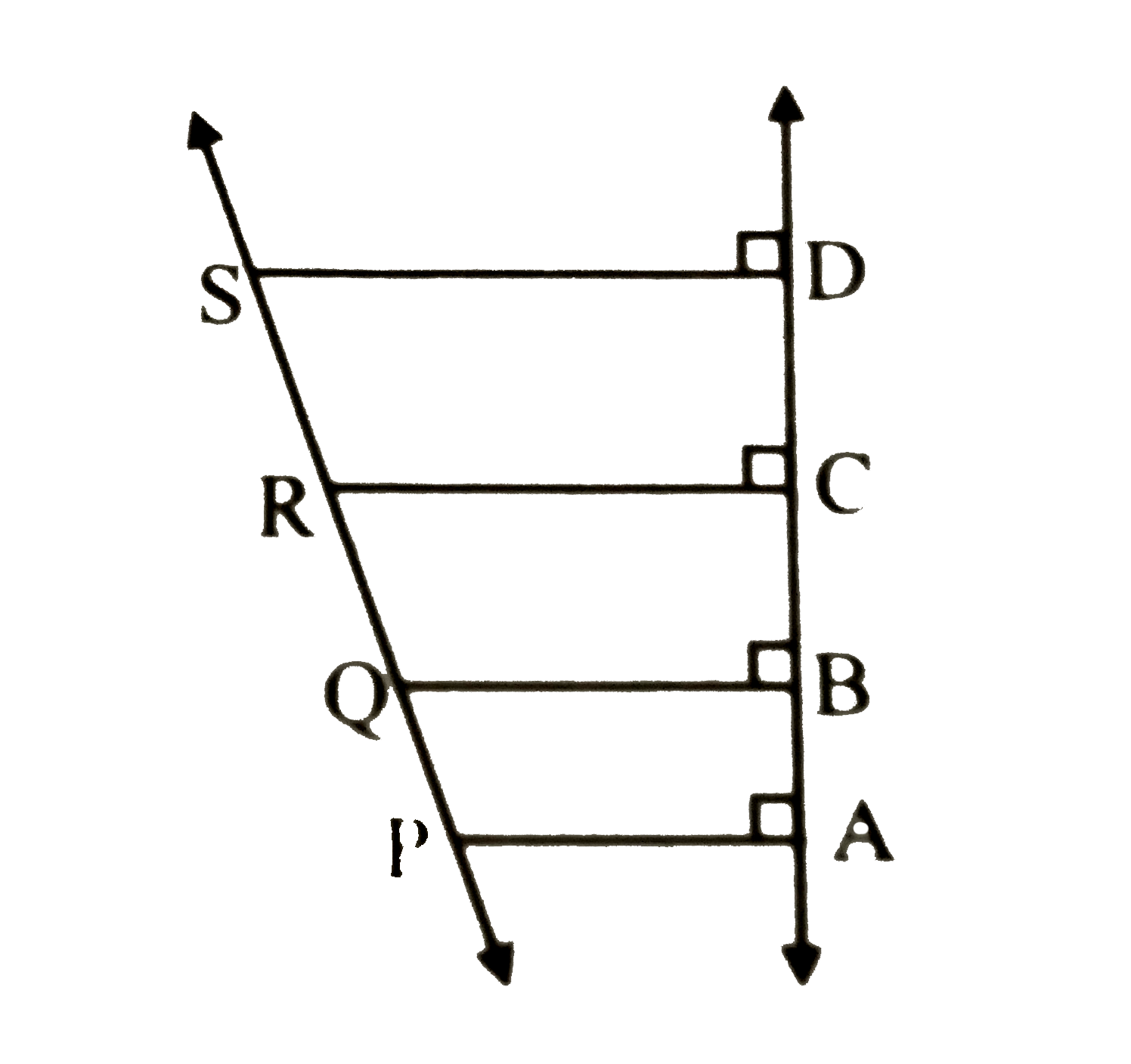In the given figure, PA, QB, RC and SD are all perpendiculars to a line 'l'.AB = 6 cm, BC = 9 cm, CD = 12 cm and SP = 36 cm. Find the PQ, QR and RS.

Step by step video & image solution for In the given figure, PA, QB, RC and SD are all perpendiculars to a line 'l'.AB = 6 cm, BC = 9 cm, CD = 12 cm and SP = 36 cm. Find the PQ, QR and RS. by Maths experts to help you in doubts & scoring excellent marks in Class 10 exams.
Updated on:21/07/2023Topper's Solved these Questions
Similar Questions
14 In Fig. 6.21, PA, QB Rc and SD are all perpendiculars to a line l, AB 6 cm, Bc 9 cm, CD g cm and SP 36 om Find PO, QR an RS. Fig. 6.21
View SolutionIn the adjoining figure, seg PA , seg QB, seg RC and seg SD are perpendicular to line AD. AB = 60, BC = 70, CD = 80, PS = 280, then find PQ, QR and RS.

View Solution
Knowledge Check
In the figure QA and PB are perpendicular to AB. If AO=10cm,BO=6andPB=9cm. Find AQ :
 A8 cmB9 cmC15 cmD12 cm
A8 cmB9 cmC15 cmD12 cmIn the given figure, if AB = 10 cm, CD = 7 cm, SD = 4 cm and AS = 5 cm, then BC = ?
 A9 cmB8 cmC7.5 cmD6 cm
A9 cmB8 cmC7.5 cmD6 cmABCD is a trapezium in which AB∣∣CD,AB=20cm,BC=10 cm, CD=10 cm and AD=10 cm . Find ∠ADC
A80∘B100∘C120∘D140∘
In Fig. 4.91, QA and PB are perpendiculars to AB . If AO=10cm , BO=6cm and PB=9cm . Find AQ . (FIGURE)
View Solution
AB, EF and CD are parallel lines. Given that EG = 5 cm, GC = 10 cm, AB = 15 cm and DC = 18 cm, find AC?
View SolutionIn given figure, if ∠A=∠C, AB= 6 cm, BP = 15 cm, AP = 12 cm and CP= 4 cm, then find the lengths of PD and CD.

View SolutionIn a quadrilateral ABCD , AB = 5 cm , BC = 37 cm , CD = 35 cm , BD = 12 cm , and AD = 13 cm . Find its area .
View SolutionIn the adjoining figure, AB=8cm,DM=6cmandBC=6cm. Find the length of DN

View Solution
